The 8 Most Common Types of Sushi, Explained

Different types of sushi
If you didn’t grow up eating sushi regularly, getting invited out to a sushi restaurant can be intimidating. With the exception of lox, the concept of eating raw fish is literally a foreign concept to some Americans.
Or maybe you have figured out the one or two rolls you feel comfortable eating and want to branch out but aren’t sure where to start—mainly because you don’t know what half of the words on the menu mean. Use this guide on the most common types of sushi as a reference before making your reservation. Then, you can head into the restaurant feeling confident and can save your questions for the more unexpected menu options.
Related: So You're Craving Sushi—Here Are the Healthiest and Unhealthiest Items on the Menu
Different Types of Sushi: The Most Common Explained
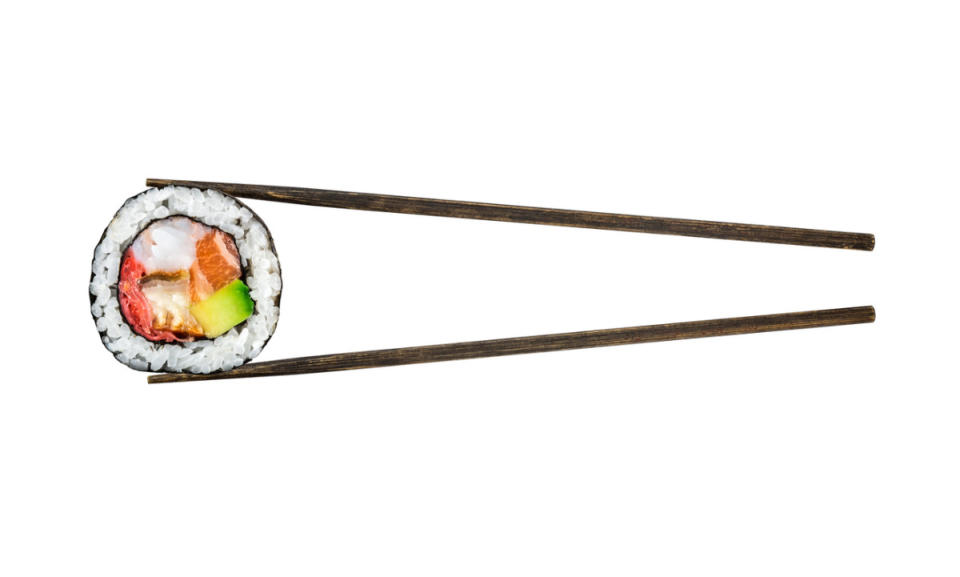
iStock
1. Maki
Most sushi restaurants have an entire menu section dedicated to maki. So what is it? “Maki translates to ‘roll’ [in Japanese], says Bryan Sekine, the founder and lead instructor at Secrets of Sushi. He explains that maki is a roll where nori (seaweed) forms the outermost layer. Often, maki consists of the filling (typically fish and veggies) in the center, rice, and then nori as the outer layer.
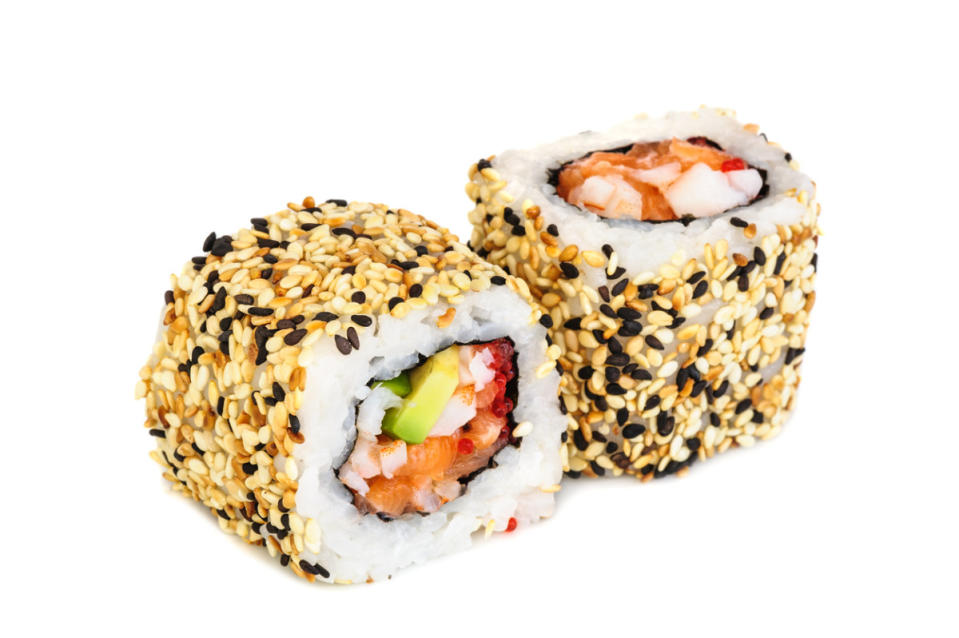
iStock
2. Uramaki
“‘Uramaki’ translates to ‘inside out roll,'” Sekine says, explaining that this means that the rice is on the outside as opposed to the seaweed. “‘Ura’ means the ‘back side of something’ in Japanese,” says Chika Ravitch, author of Sushi For Beginners. “Uramaki was created for Americans by a Japanese sushi chef because many people in the U.S didn’t like the feel of eating nori, which is edible black seaweed.”
Related: How To Make Sushi At Home—7 Recipes To Try
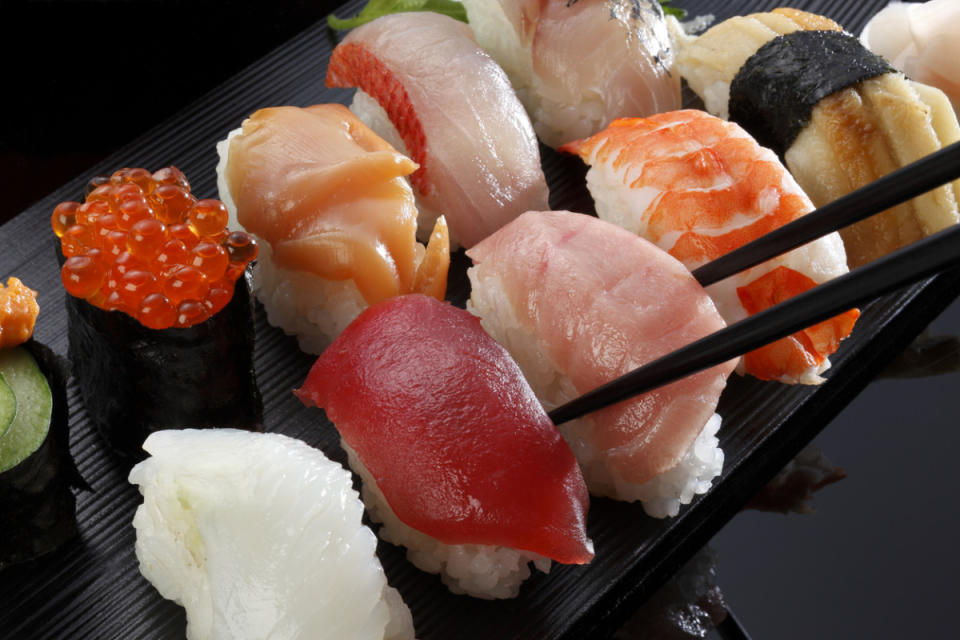
iStock
3. Nigiri
If you’re not into the taste of nori (remember, that’s seaweed), nigiri may be more your style. Ravitch explains that nigiri is a rectangular bed of sushi rice with a slice of fish or cooked meat on top. Sekine says that, sometimes, nigiri is served with a little ball of rice instead of a rectangular bed. “This is the most traditional form of sushi and the commonly found type of sushi in Japan,” he says. Typically, nigiri rice contains rice vinegar for flavor.
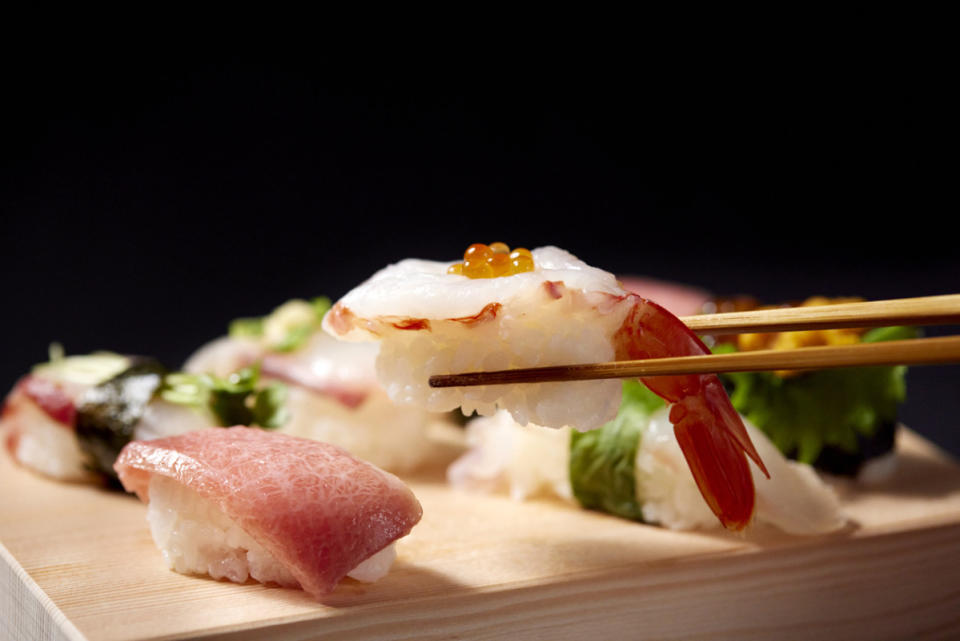
iStock
4. Sashimi
“Sashimi refers to slices of fish that are most commonly served raw but can also be cooked,” Sekine says. Ravitch adds that sashimi doesn’t come with any rice. “In sushi restaurants in Japan, people traditionally eat sashimi first like an appetizer, and then eat sushi,” she says.
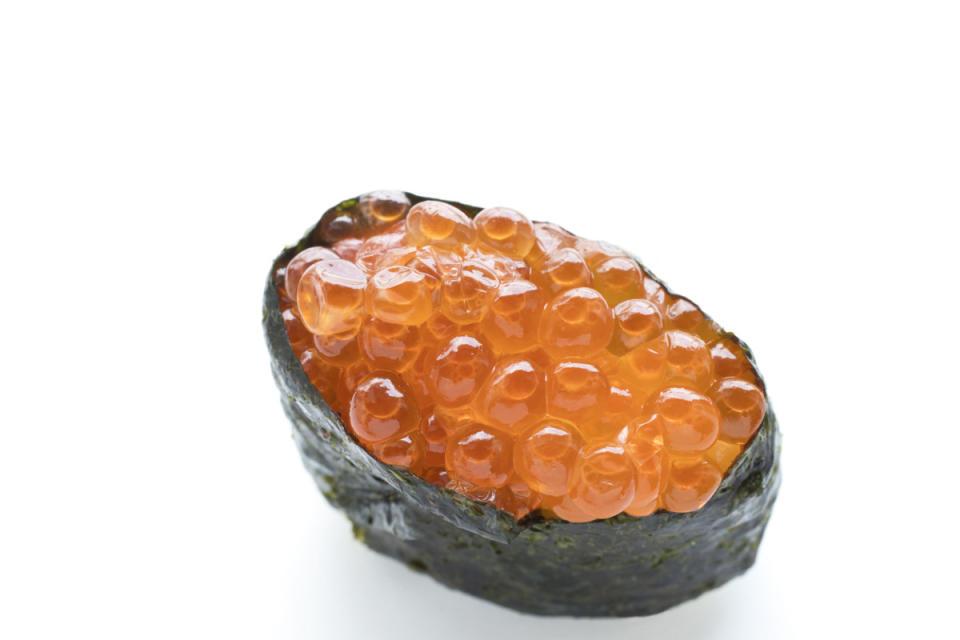
iStock
5. Gunkan
Pop quiz! Can you remember what a nigiri roll is? (It’s the rice ball or bed of rice with a slice of fish or cooked meat on top.) Well, Sekine explains that gunkan is a type of nigiri. “The strip of seaweed is wrapped around a ball of rice and topped with an ingredient that wouldn't otherwise be able to be served as nigiri,” he says. For example, he says if you ordered Masago nigiri, this type of sushi is made with smelt roe (which look like little orange balls), it would come in the form of gunkan since this would make it easier to eat.
Related: 5 Delicious, Healthy Fish That Will Pack an Omega-3 Punch Without Too Much Mercury
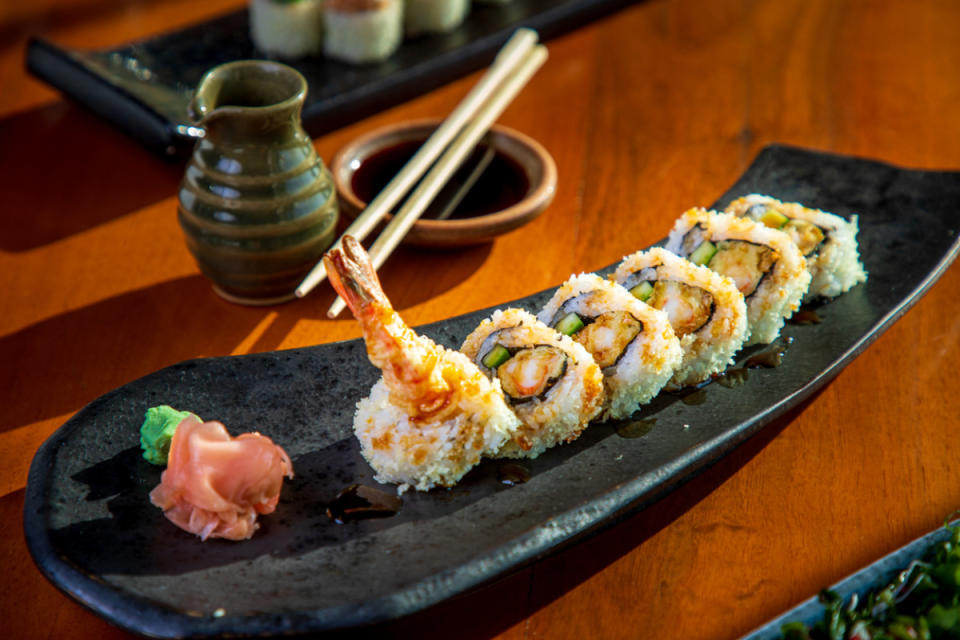
iStock
6. Tempura roll
Many sushi restaurants have tempura rolls on the menu, but Ravitch says it’s not a traditional Japanese sushi dish. “Tempura rolls were designed for foreign taste buds, like in the U.S. The fillings are usually seafood tempura or vegetable tempura,” she says. Sekine explains that tempura rolls are when either the main ingredient in the roll is fried or the entire roll is fried before being sliced into pieces.
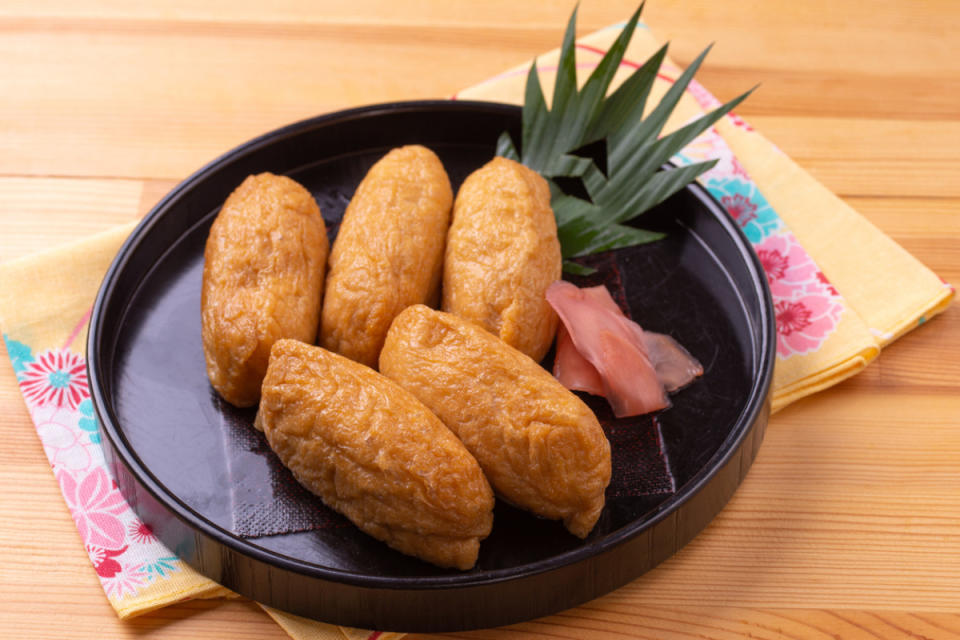
iStock
7. Inari
Ravitch says that inari is common both in the U.S. and Japan. “It is sweet-savory fried bean curd stuffed with sushi rice,” she says. Ravitch says that the prepared bean curd for this type of sushi can be purchased on Amazon or at Asian markets so you can make this type of sushi at home, too.
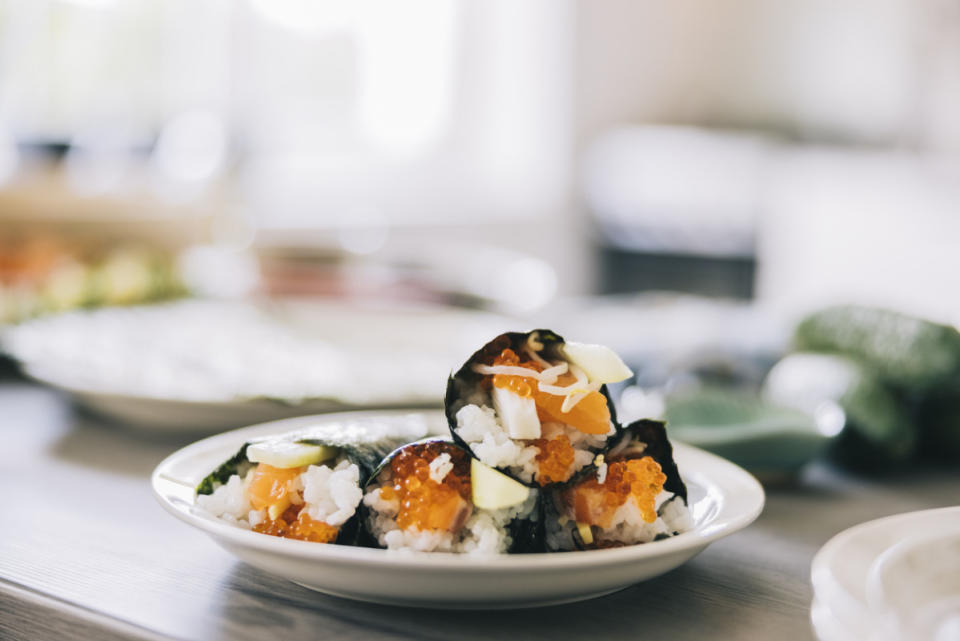
iStock
8. Temaki
This is another type of sushi that Ravitch says is very common in Japan. “Temaki is a hand-rolled cone-shaped sushi that includes rice and fillings,” she says. Since there’s no special technique to making temaki, Ravitch says it’s another type of sushi that’s a fun one to make at home. “You just need to prepare the sushi rice, fillings, and nori,” she says. “You roll any ingredients you like so temaki is great for parties.”
Now that you’re schooled on the most common types of sushi, it’s time to go fish. You can navigate the menu like a pro and feel good about what you’re ordering. You’re ready to think outside the bento box and get adventurous!
Sources
Bryan Sekine, the founder and lead instructor at Secrets of Sushi
Chika Ravitch, author of Sushi For Beginners
Up next: The Surprising Ingredient Eva Longoria Adds to Her Guacamole
